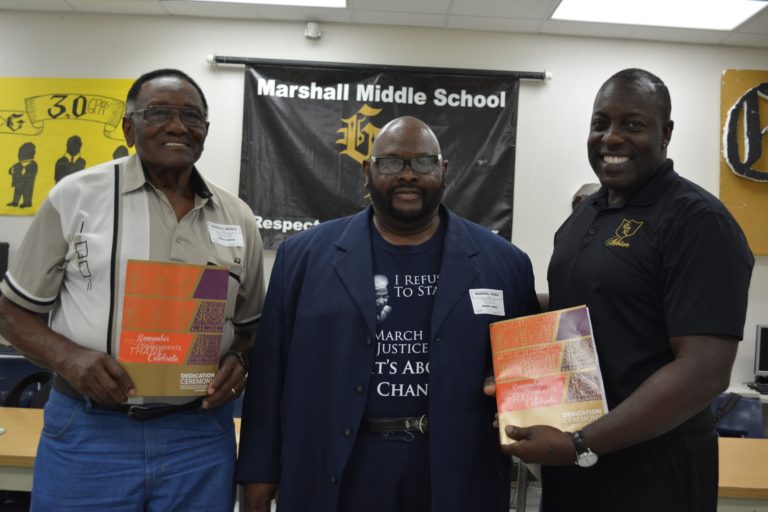
Three Plant Citians attended the grand opening of the National Museum of African American History and Culture in Washington, D.C.
As a child growing up in South Carolina, Joseph Garvin had to walk seven miles to school. The bus didn’t stop to pick up African-American children.
“That was part of the culture back in those days,” Garvin said.
His home had no air conditioning or running water. His family relied on heavy quilts to stay warm in the winter.
But now, at age 82, Garvin has seen the times starting to change. In late September, he was able to attend the grand opening of the National Museum of African American History and Culture in Washington D.C. It’s a museum he and his wife, Margaret, are charter members of.
“It does give you hope,” he said. “Your expectations are greater.”
The Journey to the Capital
Garvin’s wife, Margaret, was unable to attend the grand opening of the museum, which was held Saturday, Sept. 24. Instead, Garvin traveled to D.C. with his nephew, Marshall Middle School teacher Stanley Glover, and pastor Robert Townes.

The trio arrived in D.C. on Wednesday, Sept. 21, and stayed for five days.
They took the Metro. Gone are Garvin’s childhood days of being unable to ride public transportation.
“They never had a national museum there before,” Garvin said. “I was just excited about going and knowing we would see artifacts from the United States and abroad.”
Prior to the grand opening of the museum, the men attended Freedom Sounds: A Community Celebration. The show included musical performances, spoken word and oral history activities.
“We heard the old gospel music that the slaves sung,” Glover said. “It was phenomenal. You began to feel what

they felt. They sung it deep. You felt that time.”
“It brought back memories,” Townes added.
Townes grew up in Lakeland. He had no running water or air conditioning.
“It’s like the old primitive Baptist churches,” Townes said. “It brought all that back to me.”
“What brought it home was when we went to the museum to look at the housing,” Glover said.
The gold-colored museum, which starts four floors underground, features views of the United States Capitol, the Washington Monument and other landmarks around the National Mall.
As the men traveled through the museum on escalators, they saw the shackles and garb from Plantation workers and the casket of Emmett Till, an African-American teenager who was killed at 14 after allegedly flirting with a white woman. An underground railroad was built inside the museum.
“To look at the killings now … it brought back some things,” Glover said. “When you walk up, that feeling that you
get is, ‘Whoa, this is phenomenal.’”
Glover hopes the museum will serve as a history lesson to people of all ages and races.
“It can connect the missing dots that haven’t been connected,” he said. “Whites and Hispanics can view the struggles and get a taste of what the struggle was like. There are so many injustices out there now that we must see … we’re working our way toward being united as one, as we say in our Pledge of Allegiance. We are united as one, we are Americans.”
It’s a reminder to the men how far they’ve come and how far they still have left to go.
“We’ve still got a ways to go in 2016,” Townes said. “I just look at the dream Dr. King had that’s coming to fruition. I think our youth (should go) to this museum.”
Contact Emily Topper at etopper@plantcityobserver.com.
